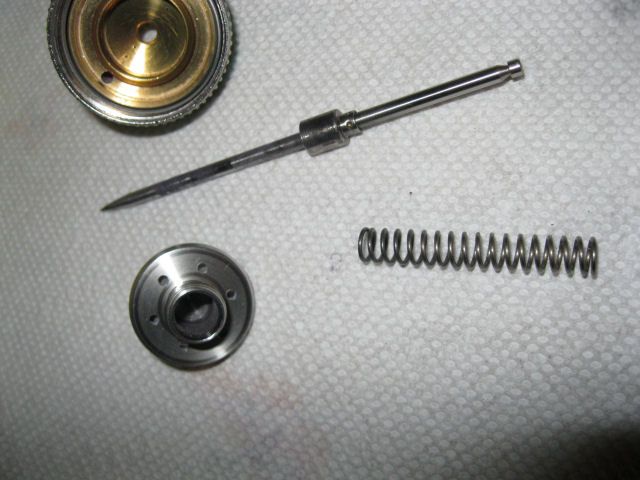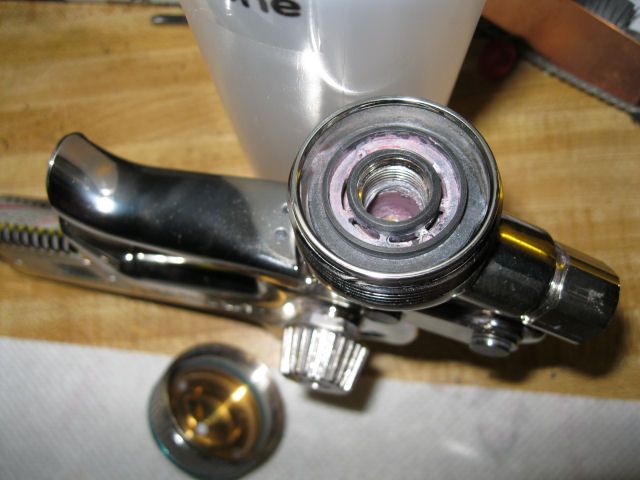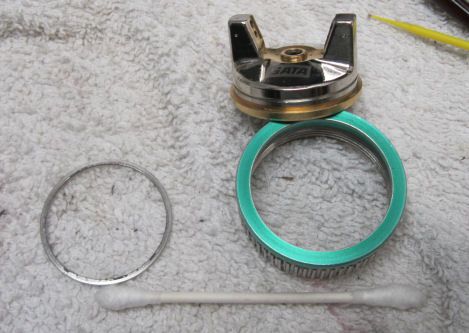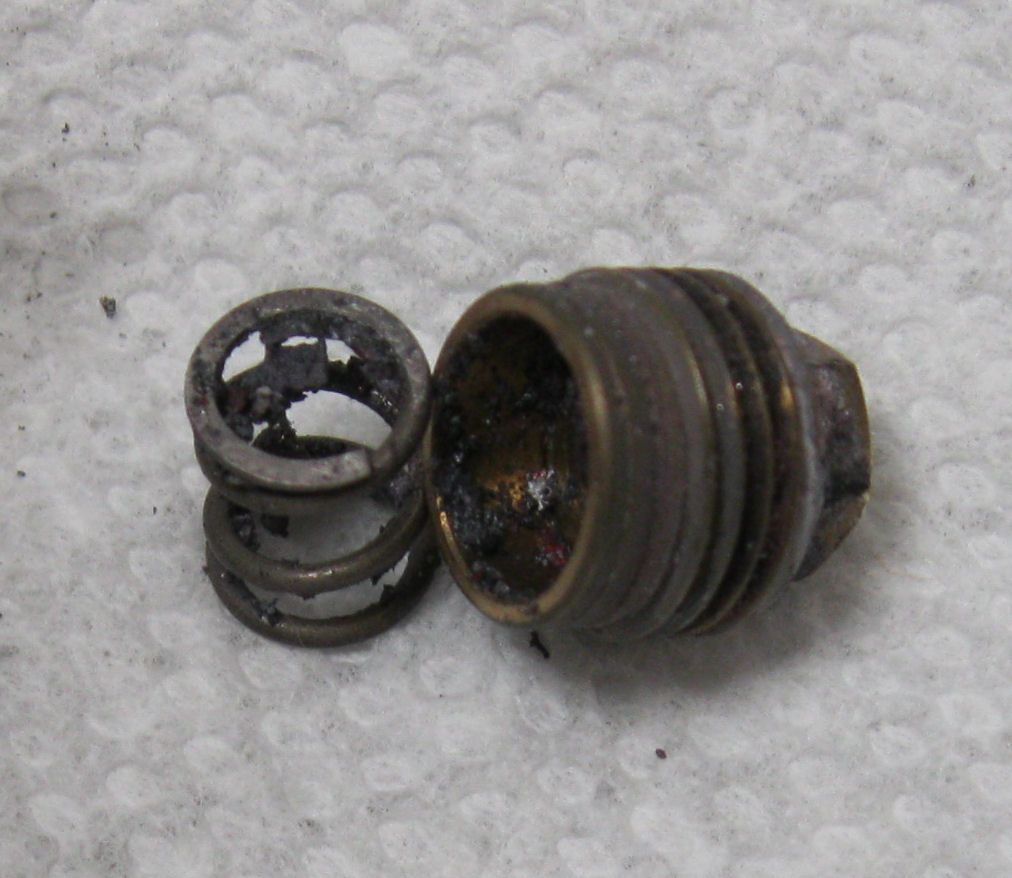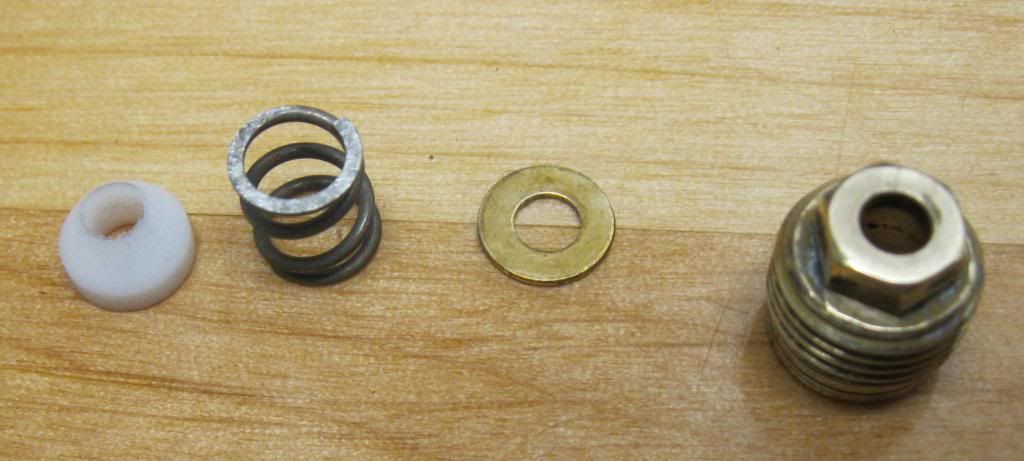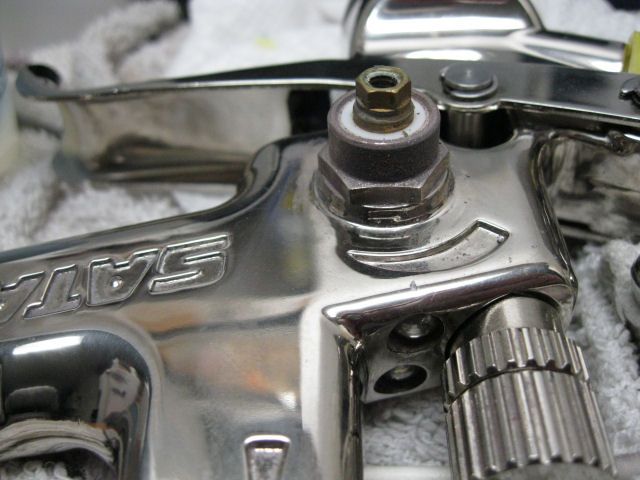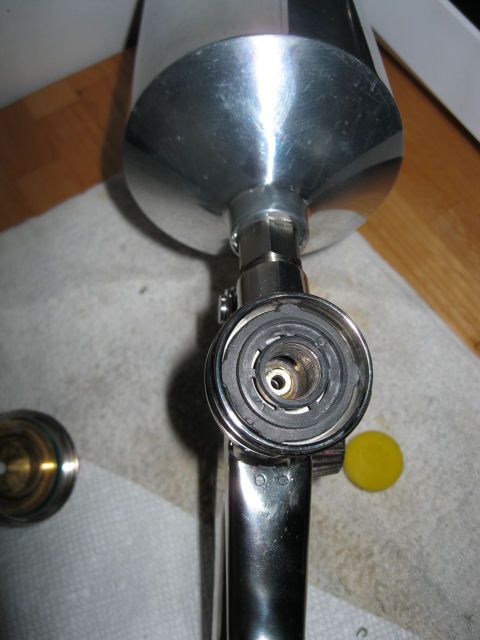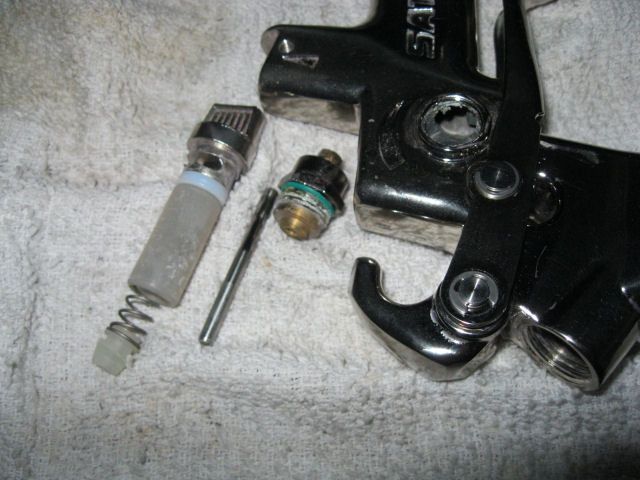Bob Heine
Oldtimer
Thanks to the information on this site I felt reasonably confident that I could clean up a spray gun disaster.
I bought a Satajet 2000 HVLP gun on this site that the previous owner said he used on a couple of paint jobs. I paid $200 including shipping and thought it was a good deal. From the outside it looks like a pretty nice gun; from the inside not so much. The cup should have been a hint. Not sure what that is but it looks like primer and red or pink basecoat.
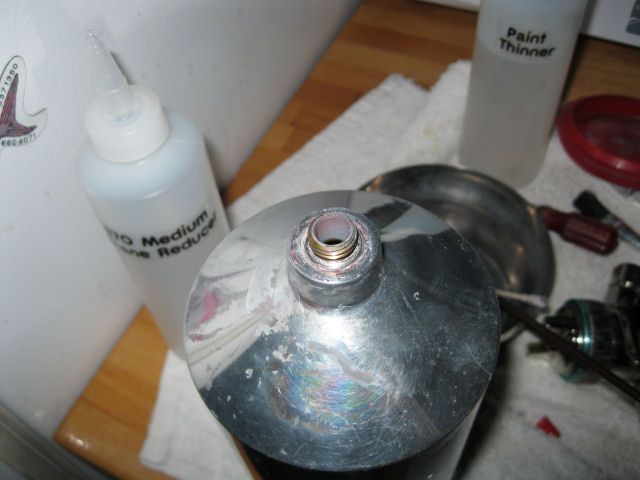
Inside the cup it looks like the gun was laid down and just left there.

Not knowing what kind of paint this is, I tried cutting it with lacquer thinner and that did nothing. Moved on to SPI Urethane reducer and some paint came off on a Q-tip. I had similar results with acetone so I figured it must be a 2K primer.
Based on Barry’s recommendation, I ordered a gallon of Berryman Chem-Dip Carburetor & Parts Cleaner. As long as I was ordering, I bought a spray can of Klean-Strip Naked Gun Spray Gun Paint Remover. I already had a can of Klean-Strip KS-3 Stripper just in case the other two weren’t strong enough.
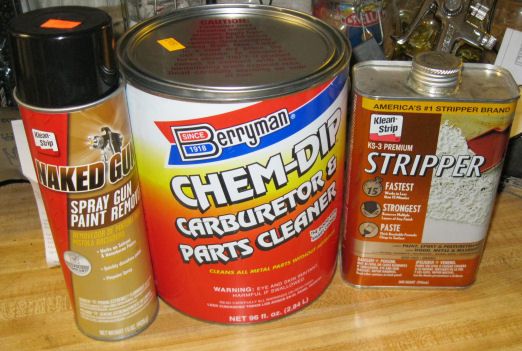
I was able to submerge the cup in the Berryman after removing the basket. I gave it 15-minutes and there was very little change so I put it in for another hour. I was able to remove a couple of spots but the large deposit inside the cup was holding strong. Back in the Berryman overnight and when I removed it in the morning the part of the cup that was submerged had gone from a bright shine to a dull aluminum finish. The deposit was still hanging on. I tried some of the stripper on the brass threads and it was more effective than the other chemicals but it’s so strong I am only going to use it as a last resort and I don’t plan on leaving parts soaking in it.
I went back to the acetone but this time I capped the outlet, soaked a paper towel with acetone and placed the towel over the deposit. Put the cap on the cup and set it aside for a day. Next morning there was still a deposit but rubbing with acetone was removing some of it. I gave up and used a gray Scotchbrite and got rid of the deposit.
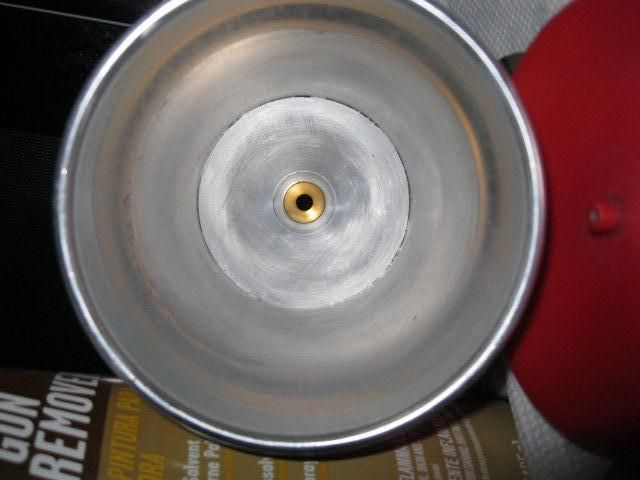
I used an old Mothers buffing ball (waste of money) with compound to clean up the inside and my stationary buffer to clean up the outside. I had removed the cup adapter from the gun because it was lined with primer as well. Because it was chrome, it cleaned up faster and better than the aluminum cup.
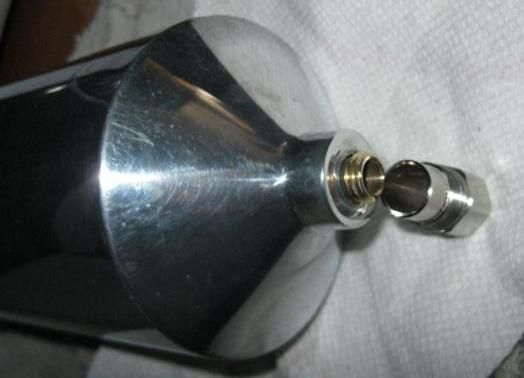
Once I finished with cleaning up the cup I figured it’s time to break down the gun and have a look inside.
I bought a Satajet 2000 HVLP gun on this site that the previous owner said he used on a couple of paint jobs. I paid $200 including shipping and thought it was a good deal. From the outside it looks like a pretty nice gun; from the inside not so much. The cup should have been a hint. Not sure what that is but it looks like primer and red or pink basecoat.

Inside the cup it looks like the gun was laid down and just left there.

Not knowing what kind of paint this is, I tried cutting it with lacquer thinner and that did nothing. Moved on to SPI Urethane reducer and some paint came off on a Q-tip. I had similar results with acetone so I figured it must be a 2K primer.
Based on Barry’s recommendation, I ordered a gallon of Berryman Chem-Dip Carburetor & Parts Cleaner. As long as I was ordering, I bought a spray can of Klean-Strip Naked Gun Spray Gun Paint Remover. I already had a can of Klean-Strip KS-3 Stripper just in case the other two weren’t strong enough.

I was able to submerge the cup in the Berryman after removing the basket. I gave it 15-minutes and there was very little change so I put it in for another hour. I was able to remove a couple of spots but the large deposit inside the cup was holding strong. Back in the Berryman overnight and when I removed it in the morning the part of the cup that was submerged had gone from a bright shine to a dull aluminum finish. The deposit was still hanging on. I tried some of the stripper on the brass threads and it was more effective than the other chemicals but it’s so strong I am only going to use it as a last resort and I don’t plan on leaving parts soaking in it.
I went back to the acetone but this time I capped the outlet, soaked a paper towel with acetone and placed the towel over the deposit. Put the cap on the cup and set it aside for a day. Next morning there was still a deposit but rubbing with acetone was removing some of it. I gave up and used a gray Scotchbrite and got rid of the deposit.

I used an old Mothers buffing ball (waste of money) with compound to clean up the inside and my stationary buffer to clean up the outside. I had removed the cup adapter from the gun because it was lined with primer as well. Because it was chrome, it cleaned up faster and better than the aluminum cup.

Once I finished with cleaning up the cup I figured it’s time to break down the gun and have a look inside.

